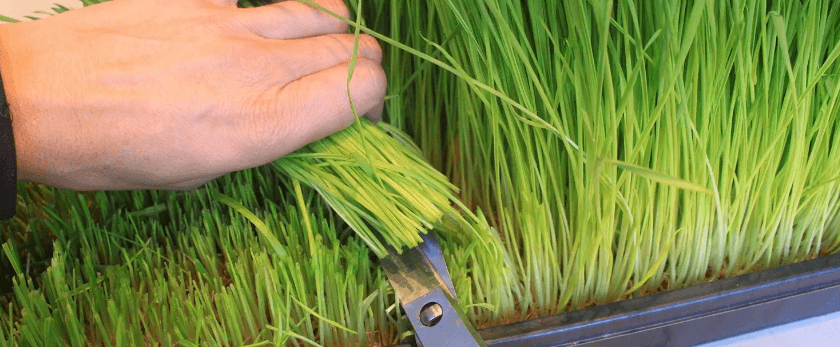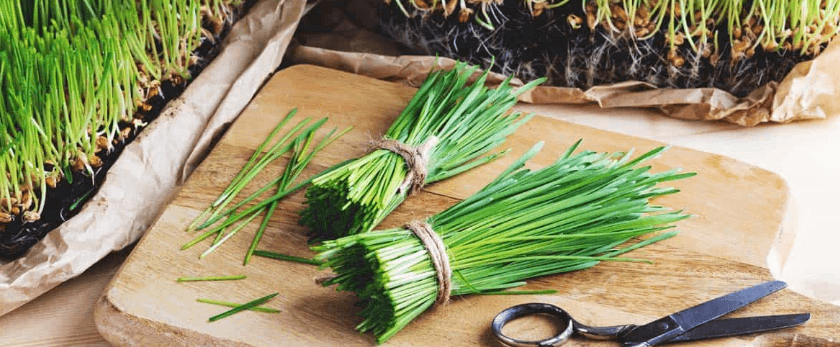Wheatgrass is a nutrient-rich superfood that has gained popularity in recent years for its numerous health benefits. It is packed with vitamins, minerals, and antioxidants, making it a great addition to any diet. But did you know that you can easily grow your own wheatgrass at home? Not only is it cost-effective, but it also allows you to have a fresh supply of this superfood at your fingertips. In this article, we will guide you through the process of growing your own wheatgrass, from choosing the right seeds to harvesting and using it.
Choosing the Right Seeds
The first step in growing your own wheatgrass is to choose the right seeds. You can find wheatgrass seeds at most health food stores or online. Make sure to choose organic, non-GMO seeds for the best results. You can also use wheat berries, which are the whole wheat kernels, but they may take longer to sprout.
Preparing the Soil
Wheatgrass can be grown in soil or in a hydroponic system. If you choose to grow it in soil, make sure to use a high-quality potting mix that is free from chemicals and pesticides. Fill a shallow tray or container with the potting mix, leaving about an inch of space at the top.
Planting the Seeds
Spread the wheatgrass seeds evenly over the soil, making sure they are not too close together. Gently press the seeds into the soil, but do not bury them completely. Cover the seeds with a thin layer of soil and mist the top with water.
Watering
Wheatgrass needs to be watered regularly to keep the soil moist. However, make sure not to overwater as this can lead to mold growth. The best way to water wheatgrass is to mist it with a spray bottle or use a watering can with a fine nozzle. Water the wheatgrass once or twice a day, depending on the temperature and humidity levels in your home.
Light
Wheatgrass needs plenty of natural light to grow. Place the tray in a sunny spot, preferably near a window. If you do not have access to natural light, you can use a grow light to provide the necessary light for the wheatgrass to thrive.
Soil Fertilization
Wheatgrass is a fast-growing plant and requires regular fertilization to ensure it has enough nutrients to grow. You can use an organic liquid fertilizer or make your own by mixing compost or worm castings with water. Fertilize the wheatgrass once a week, following the instructions on the fertilizer package.
Pruning
As the wheatgrass grows, it will develop a second set of leaves. Once this happens, you can start pruning the wheatgrass. Use a pair of scissors to trim the wheatgrass just above the soil level. This will encourage new growth and prevent the wheatgrass from becoming too tall and top-heavy.
What is the Best Time to Grow Wheatgrass?
Wheatgrass can be grown year-round, but it grows best in cooler temperatures. If you live in a hot climate, it is best to grow wheatgrass indoors or in a shaded area. In colder climates, you can grow wheatgrass outdoors during the spring and fall months.
Common Problems with Wheatgrass
While growing wheatgrass is relatively easy, there are a few common problems that you may encounter. Here are some tips to help you troubleshoot these issues:
- Mold growth: If you notice mold growing on your wheatgrass, it is a sign of overwatering. Make sure to water the wheatgrass sparingly and increase air circulation by placing a fan near the tray.
- Yellowing leaves: This can be a sign of nutrient deficiency. Make sure to fertilize the wheatgrass regularly and use a high-quality potting mix.
- Pests: Wheatgrass is susceptible to pests such as aphids and mites. If you notice any pests, you can use an organic insecticidal soap to get rid of them.

Harvesting and Using Wheatgrass
Wheatgrass is ready to be harvested when it reaches a height of 6-8 inches. Use a pair of scissors to cut the wheatgrass just above the soil level. You can use the wheatgrass immediately or store it in the refrigerator for up to a week.
There are many ways to use wheatgrass, including:
- Juicing: Wheatgrass juice is a popular way to consume this superfood. You can juice it on its own or mix it with other fruits and vegetables for a nutrient-packed drink.
- Smoothies: Add a handful of wheatgrass to your favorite smoothie recipe for an extra boost of nutrients.
- Salads: You can also add chopped wheatgrass to salads for a crunchy and nutritious addition.
- Pesto: Use wheatgrass in place of basil in your pesto recipe for a unique and healthy twist.
- Face mask: Wheatgrass has anti-inflammatory properties and can be used as a face mask to soothe and nourish the skin.
Responsible Disposal Methods
Once you have harvested your wheatgrass, it is important to dispose of the leftover soil and roots responsibly. Do not throw them in the trash as they can still be used as compost. You can add them to your compost bin or use them as mulch in your garden. This not only reduces waste but also adds nutrients back into the soil.
Conclusion
Growing your own wheatgrass is a simple and rewarding process. Not only does it provide you with a fresh supply of this nutrient-rich superfood, but it also helps reduce your carbon footprint. By following the tips and techniques outlined in this article, you can easily grow your own wheatgrass at home and enjoy its many health benefits. Remember to choose organic seeds, use responsible disposal methods, and enjoy your homegrown wheatgrass in a variety of ways. Happy growing!










